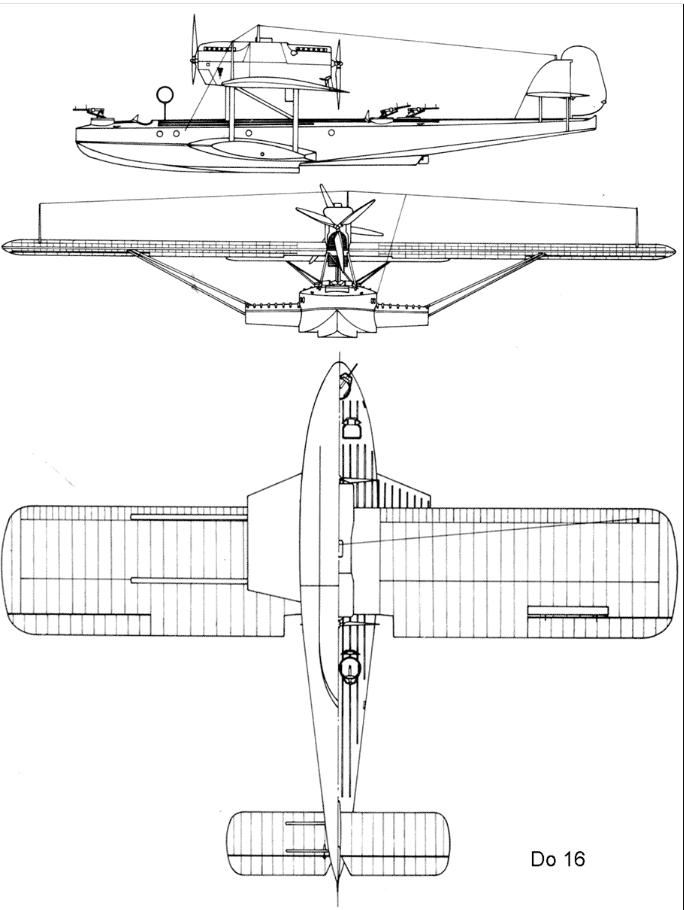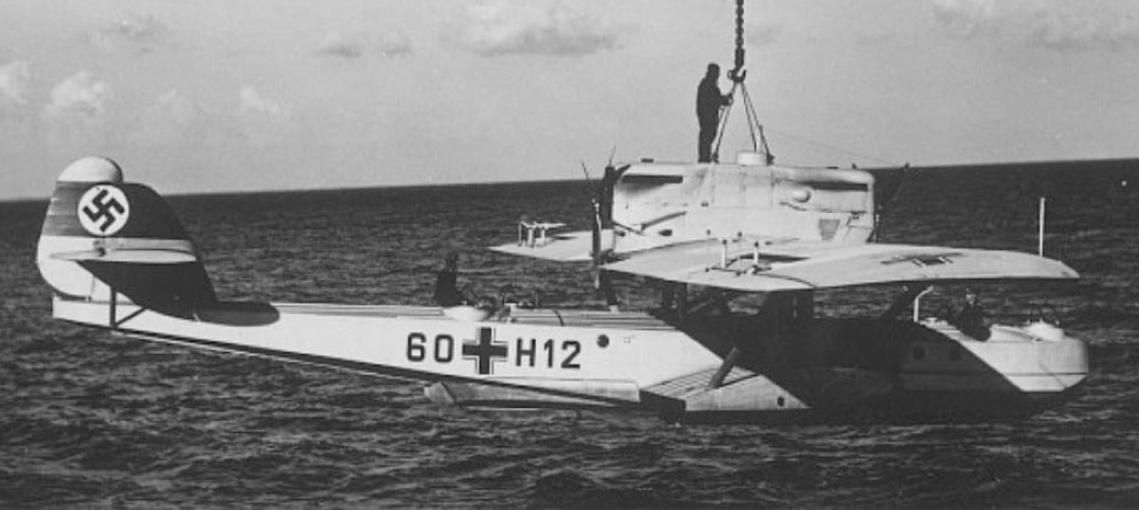
| Type |
5-seat reconnaissance flying boat |
| Engine |
2 BMW VI 7.3Z with 3-bladed fixed pitch propellers |
| Dimensions |
Length 18,2 m , height 5,4 m , span 23,2 m , wing area 96 m2 , |
| Weights |
Empty 5390 kg, loaded 7600 kg , max. take off weight 8000 kg |
| Performance |
Max.. speed 220 km/h, cruising speed 189 km/h , range 2200 km, endurance , service ceiling 3000 m , climb |
| Armament |
1 7.92 mm MG 15 machine gun in bow position ,2 × 7.92 mm MG 15 machine gun in dorsal position . Bomb load up to 4 × 50 kg on external wing racks |
30 Militätr Wal used by the Luftwaffe
The armament of the aircraft, which received the designation DoJ II d (Militarwal), later Do 16, consisted of three 7.9 mm MG15 machine guns, one of which was installed above the nose compartment, and the other two, each on its own turret, in the tail section. The rear turrets were placed asymmetrically, which made it possible to focus fire from both barrels on one side. Since the main purpose of the Dol5 was long-range reconnaissance, its bomb load did not exceed 200 kg. The crew consisted of four people (two pilots, navigator and radio operator). The first flight of the Do 16 took place on May 3, 1933.
Since the end of 1933, the new seaplane began to arrive (so far without weapons) in the Travemünde test center and other secret training units of the future German Air Force - the Luftwaffe. By the end of 1934, the number of Do 16s reached 16 units, and in February of the following year, G. Goering officially announced the re-establishment of military aviation in Germany. By September, the Luftwaffe formed a long-range reconnaissance squadron "List", armed with Dornier flying boats. In July 1936, this squadron was renamed 2/Ku.Fl.Gr.106, i.e. the 2nd squadron of the 106th coastal group. In total, the Luftwaffe received thirty Do 16s, after which the production of Dornier "Wal" aircraft in Manzel was stopped.
Do 16s remained in service with the squadron until 1938, when its began to be replaced by more modern Do18s, but some aircraft still caught the beginning of World War II. According to some sources, Dornier "Wal" seaplanes took part in patrolling the North Sea in September 1939. As training and auxiliary, Do 16 remained in the Luftwaffe until the end of 1940.


